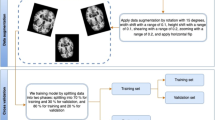Abstract
The rise of dementia among the old population across the world will rapidly make financial suffering on healthcare industries, yet convenient acknowledgment of early notice for dementia and appropriate reactions to the event of dementia can upgrade clinical treatment. Usage of medical service data and health behavior are generally more available than clinical information, and a pre-screening apparatus with effectively open information could be a decent answer for dementia-related issues. In this chapter, we applied different deep neural networks (DNN) algorithms including Convolutional Neural Networks (CNN), Residual Neural Networks (RNN), Inception V3, and Dense Neural Networks (Densenet) were applied to the classification of MRI brain images. We considered brain images of 1098 subjects data collected from OASIS-3 imaging datasets whose age range was between 42 and 95. The system has been run with and without fine-tuning of features. The comparison of different models was performed and it is found that CNN and Dense net was outperformed other models and provided comprehensive performance outcomes with an accuracy of 95.7%, and 95.5%, respectively. This method can help both patients and doctors on early pre-screening of possible dementia.
Access this chapter
Tax calculation will be finalised at checkout
Purchases are for personal use only
Similar content being viewed by others
References
G. Battineni et al., Improved Alzheimer’s disease detection by MRI using multimodal machine learning algorithms. Diagnostics (Basel, Switzerland) 11(11), 2103 (2021). http://doi.org/10.3390/diagnostics11112103
X. Liu, D. Tosun, M.W. Weiner, N. Schuff, Locally linear embedding (LLE) for MRI based Alzheimer’s disease classification. Neuroimage 83, 148–157 (2013). https://doi.org/10.1016/j.neuroimage.2013.06.033
G. Battineni, N. Chintalapudi, F. Amenta, E. Traini, A comprehensive machine-learning model applied to magnetic resonance imaging (MRI) to predict Alzheimer’s disease (AD) in older subjects. J. Clin. Med. 9(7), 1–14 (2020). https://doi.org/10.3390/jcm9072146
M. Signaevsky et al., Artificial intelligence in neuropathology: deep learning-based assessment of tauopathy. Lab. Investig. 99(7), 1019–1029 (2019). https://doi.org/10.1038/S41374-019-0202-4
H. Li, M. Habes, D.A. Wolk, Y. Fan, Alzheimer's Disease Neuroimaging Initiative, A deep learning model for early prediction of Alzheimer’s disease dementia based on hippocampal magnetic resonance imaging data. Alzheimer’s Dement. 15(8), 1059–1070 (2019). http://doi.org/10.1016/J.JALZ.2019.02.007
E.E. Bron et al., Cross-cohort generalizability of deep and conventional machine learning for MRI-based diagnosis and prediction of Alzheimer’s disease. NeuroImage Clin. 31, 102712 (2021). http://doi.org/10.1016/J.NICL.2021.102712
R. Jain, N. Jain, A. Aggarwal, D.J. Hemanth, Convolutional neural network based Alzheimer’s disease classification from magnetic resonance brain images. Cogn. Syst. Res. 57, 147–159 (2019). https://doi.org/10.1016/J.COGSYS.2018.12.015
H. Choi, K.H. Jin, Alzheimer’s Disease Neuroimaging Initiative, Predicting cognitive decline with deep learning of brain metabolism and amyloid imaging. Behav. Brain Res. 344, 103–109 (2018). http://doi.org/10.1016/J.BBR.2018.02.017
C. Ge, Q. Qu, I.Y.H. Gu, A.S. Jakola, Multi-stream multi-scale deep convolutional networks for Alzheimer’s disease detection using MR images. Neurocomputing 350, 60–69 (2019). https://doi.org/10.1016/J.NEUCOM.2019.04.023
A. Puente-Castro, E. Fernandez-Blanco, A. Pazos, C.R. Munteanu, Automatic assessment of Alzheimer’s disease diagnosis based on deep learning techniques. Comput. Biol. Med. 120 (2020). https://doi.org/10.1016/J.COMPBIOMED.2020.103764
P.J. LaMontagne et al., OASIS-3: longitudinal neuroimaging, clinical, and cognitive dataset for normal aging and Alzheimer disease. medRxiv (2019). http://doi.org/10.1101/2019.12.13.19014902
A. Fernández, S. García, M. Galar, R.C. Prati, B. Krawczyk, F. Herrera, Foundations on imbalanced classification, in Learning from Imbalanced Data Sets (2018), pp. 19–46. http://doi.org/10.1007/978-3-319-98074-4_2
J.C. Bezdek, S.K. Chuah, D. Leep, Generalized k-nearest neighbor rules. Fuzzy Sets Syst. 18(3), 237–256 (1986). https://doi.org/10.1016/0165-0114(86)90004-7
R. Mohammed, J. Rawashdeh, M. Abdullah, Machine learning with oversampling and undersampling techniques: overview study and experimental results, in 2020 11th International Conference on Information and Communication Systems, ICICS 2020 (2020), pp. 243–248. http://doi.org/10.1109/ICICS49469.2020.239556
N.V. Chawla, K.W. Bowyer, L.O. Hall, W.P. Kegelmeyer, SMOTE: synthetic minority over-sampling technique. J. Artif. Intell. Res. 16, 321–357 (2011). https://doi.org/10.1613/jair.953
K. He, X. Zhang, S. Ren, J. Sun, Deep residual learning for image recognition, in Proceedings of IEEE Computer Society Conference on Computer Vision and Pattern Recognition, vol. 2016 (2015), pp. 770–778. http://doi.org/10.1109/CVPR.2016.90
G. Huang, Z. Liu, L. Van Der Maaten, K.Q. Weinberger, Densely connected convolutional networks, in Proceedings—30th IEEE Conference on Computer Vision and Pattern Recognition, CVPR 2017, vol. 2017 (2016), pp. 2261–2269. http://doi.org/10.1109/CVPR.2017.243
C. Szegedy, V. Vanhoucke, S. Ioffe, J. Shlens, Z. Wojna, Rethinking the inception architecture for computer vision, in Proceedings of IEEE Computer Society Conference on Computer Vision and Pattern Recognition, vol. 2016, pp. 2818–2826 (2015). http://doi.org/10.1109/CVPR.2016.308
Conflicts of Interest
No author has any conflicts of interest.
Author information
Authors and Affiliations
Corresponding author
Editor information
Editors and Affiliations
Rights and permissions
Copyright information
© 2022 The Author(s), under exclusive license to Springer Nature Singapore Pte Ltd.
About this chapter
Cite this chapter
Battineni, G., Hossain, M.A., Chintalapudi, N., Amenta, F. (2022). Alzheimer’s Disease Classification Using Feed Forwarded Deep Neural Networks for Brain MRI Images. In: Mittal, M., Goyal, L.M. (eds) Predictive Analytics of Psychological Disorders in Healthcare. Lecture Notes on Data Engineering and Communications Technologies, vol 128. Springer, Singapore. https://doi.org/10.1007/978-981-19-1724-0_14
Download citation
DOI: https://doi.org/10.1007/978-981-19-1724-0_14
Published:
Publisher Name: Springer, Singapore
Print ISBN: 978-981-19-1723-3
Online ISBN: 978-981-19-1724-0
eBook Packages: Intelligent Technologies and RoboticsIntelligent Technologies and Robotics (R0)




